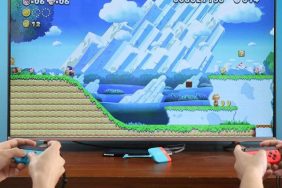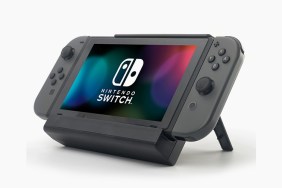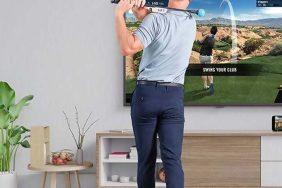In hindsight, the Wii U was essentially a beta test for the Switch. Though Nintendo would have preferred that its underwhelming last console would have taken off more than it did, the mistakes made with the divisive system have clearly been taken into account this time around, and as such the Switch feels like Nintendo’s first console since the Gamecube that is naturally conducive to providing great gaming experiences.
Though the Wii U had a good selection of games, the hardware itself was underwhelming and this was reflected in its sales. While the Wii had its problems, its accessibility and the overwhelming success of the likes of Wii Sports made it one of Nintendo’s most successful consoles to date, though Nintendo lost sight of what made it so popular with its follow-up. While the Switch isn’t quite as simplistic as the Wii, it shares a lot of its DNA with that console along with a selection of the Wii U’s best ideas. As a result, it’s got the potential to be one of Nintendo’s best consoles to date.
Here’s why we’re so optimistic about the Switch’s future, and why it’s so much better than the Wii U:
Crisp, clear display

Playing on the Wii U’s GamePad was like watching a low-quality YouTube video, with it only outputting at a sub-par 480p. While this was manageable, it certainly wasn’t an adequate alternative to playing games on the TV. On the other hand, the Switch’s sizeable portable display boasts a 720p resolution, and it looks great.
Also See: The Legend of Zelda: Breath of the Wild’s Metascore Bombarded with Negative Reviews for “Paid Reviews”
I’ve now spent more time playing with my Switch in its portable mode than its TV mode, and at no point have I felt that doing so was a compromise. The Legend of Zelda: Breath of the Wild still looks fantastic on the Switch’s 6.2-inch display, and its multi-touch functionality really helps make it the tablet/console hybrid Nintendo was shooting for with the Wii U; the difference being that this time around they’ve actually managed to nail the concept.
Ease of use
The Wii U was a cumbersome, fiddly thing that occupied an awkward middle ground between being a good tablet and a good home console, though was unfortunately neither. It had a library of great games, but it felt like they were created in spite of the console’s weaknesses rather than as a result of its strengths, with even Nintendo giving up on the GamePad’s capabilities swiftly following its launch.
The Switch represents a much better design from Nintendo, and it’s pretty incredible just how much of a step-up in quality it is compared to the Wii U. Switching from portable to TV mode is a simple process that works instantly, while removing the Joy-Con controllers from the sides of its display is satisfying while also presenting a new, useful way to play (we’ll get to that later). The entire console feels like Nintendo listened to the criticisms of the Wii U, went back to the drawing board and came back with a system that is infinitely more user friendly, and is arguably the most accessible console currently available.
Its UI is also refreshingly minimalist, offering only a handful of options such as the eShop and a captures album alongside your library of installed games. It’s easy to navigate, and considering that the Wii was successful as a result of its simplicity, this is good news for the future of the Switch.
Ways to play
Considering the Wii U’s lackluster handheld capabilities, I was sceptical about how much use I’d get out of the Switch’s portable mode. Fortunately, it transpires that its “switching” from portable to home console isn’t a gimmick, but rather a genuinely useful feature that is great for when you’re travelling around.
The Wii U’s marketing campaign posited a number of ways in which the GamePad’s portability would be useful, but in reality most only used it when they needed to interrupt a session of Mario Kart 8 to go to the bathroom. This is not the case with the Switch. In less than a week of owning the console I’ve been able to play it while commuting a la the 3DS, play it at home by hooking it up to my TV and I’ve even made use of its little kick stand, detaching its Joy-Con controllers from its sides and playing Snipperclips with my girlfriend.
Prior to owning the Switch I assumed that it’d forever remain in its dock, but the reality is that I’m getting a lot of mileage out of its portable features. It might not be as powerful as the PS4 or Xbox One, but its accessibility makes it a much more inveigling purchase than its predecessor, and if Nintendo manages to make this known to consumers then it could have another hit on its hands.
Joy-Con controllers

The Switch’s control scheme isn’t perfect — the Joy-Cons held inside the bundled grip isn’t exactly the most ergonomic of setups, and the positioning of their analog sticks makes them a little difficult to use as individual controllers — but it’s a considerable improvement over the Wii U’s setup. The Wii U required an abundance of controllers for a local multiplayer session, from the MotionPlus to the detachable nunchucks to its own pro controller. As such, purchasing the console and its accessories could become quite pricey, turning a lot of people off it in the process.
Fortunately, opting to not buy a pro controller or an extra pair of Joy-Cons for the Switch is perfectly reasonable, and Nintendo has done a good job of making the Switch a good two-player console right out of the gate. While those with larger hands may find the Joy-Cons to be a little awkward to hold, many will overlook this problem in favor of seeing the benefits of being able to play with a friend while on the go. Although the Joy-Cons and the pro controller are arguably overpriced at launch, I appreciate that the Switch has a much more simplified setup than the Wii U.
The complaints
Though I’m pleasantly surprised by the Switch and it’s a clear step up from the Wii U hardware, there are still some issues that need to be addressed. Though I have experienced no technical problems with the console, many have and the evidence has been widely shared online. Problems such as the left Joy-Con frequently disconnecting from the Switch, the portable display freezing up and dead pixels have been noted, though it’s uncertain if these are prominent issues or if it’s just a case of those who are suffering with the problems being (understandably) very vocal about them. Its dock has also come under scrutiny, with many complaining that it has scratched the screen of the console (though, again, I have yet to personally experience this).
As is typically the case with a new Nintendo console, there are also complaints over the power of the hardware itself. Its use of an Nvidia Tegra X1 chipset has led to some writing it off as an overpriced Nvidia Shield tablet, comparing it unfavorably to the PS4 and Xbox One’s specs. However, comparing the Switch to a tablet is dramatically underselling the console’s key selling point, which is its function as a home/portable console hybrid. Sure, Nintendo may have borrowed elements from Android tablets, but the company has provided enough of a unique spin that it feels distinctly like its own thing. After the Wii U, which felt like a jack of all trades but a master of none, this is heartening news.







